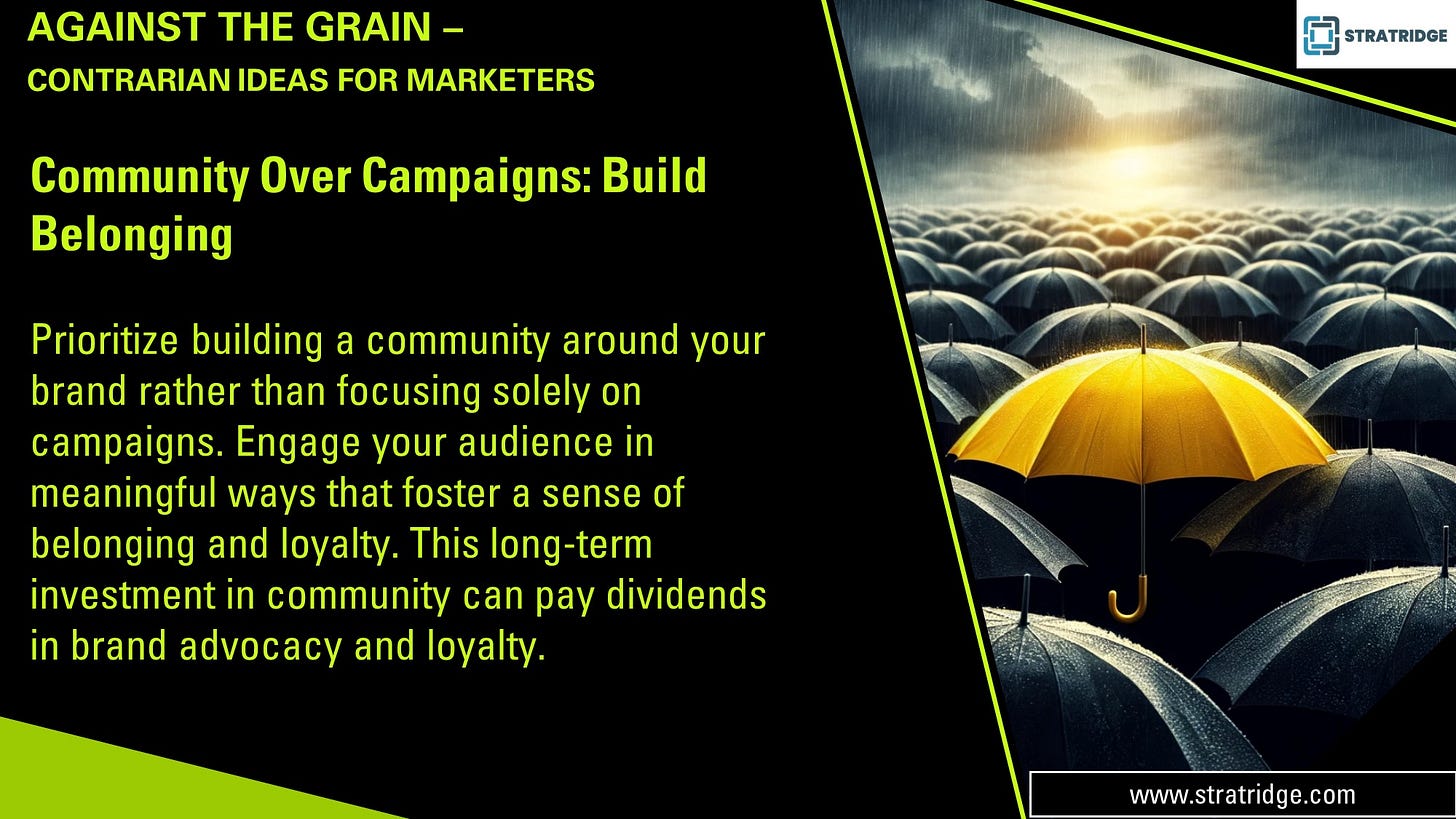Today, most interactions are primarily "transactions." Consumers are bombarded with endless advertisements and marketing gimmicks. Instead of adding to the burden, a contrarian approach that builds a genuine sense of community around a brand can be remarkably effective. The traditional marketing model, which prioritizes campaigns designed to push products or promotions, often overlooks the profound impact of cultivating a deeper, more meaningful connection with the audience. By prioritizing community over campaigns, brands can foster a sense of belonging and loyalty that enhances consumer engagement and turns customers into long-term advocates.
The Power of Community in Marketing
Community-focused marketing goes beyond transactional relationships and seeks to engage customers in ways that resonate with their identities, interests, and values. This approach involves creating spaces—whether online or offline—where customers can interact with the brand and each other, share experiences, and feel part of a larger group that shares their passions and interests.
Benefits of Emphasizing Community:
1. Enhanced Brand Loyalty: When customers feel they are part of a brand's community, their loyalty deepens. They're not just buying a product or service but engaging in an ongoing relationship that feels reciprocal and meaningful.
2. Increased Customer Retention: A strong community keeps customers coming back. The social interactions and connections formed within the community create a sticky factor that competitors don't easily replicate.
3. Organic Advocacy: Brand community members are more likely to become brand advocates. They share positive experiences within their networks, which can be more persuasive than traditional advertising.
4. Richer Customer Insights: Community engagement gives brands valuable insights into customer preferences, behaviors, and attitudes. This feedback is continuously generated and can inform product development, marketing strategies, and customer service improvements.
Strategies for Building Brand Community
1. Identify Common Values and Interests: Identify the core values and interests that resonate with your target audience. These will form the foundation of your community and guide the creation of relevant content and activities that bring members together.
2. Create Engaging Platforms: Develop platforms where your community can thrive. This could be a branded online forum, social media groups, or regular in-person meetups. The platform should facilitate interaction, sharing, and collaboration.
3. Encourage User-Generated Content: Encourage community members to contribute their content. This could include testimonials, stories, photos, or tips related to the brand. User-generated content enriches the community experience and helps members feel valued and heard.
4. Host and Sponsor Events: Organize events that bring community members together to strengthen bonds. These can be workshops, seminars, webinars, or informal gatherings. Events can also be used to celebrate community milestones or launches of new products.
5. Provide Exclusive Benefits: Offer community members exclusive benefits such as early access to new products, special discounts, or the chance to influence future offerings. This reinforces the value of community involvement and can increase engagement and loyalty.
6. Foster Open Communication: Maintain an open line of communication between the brand and the community. Regular updates, responding to feedback, and active participation by the brand in community discussions are crucial.
Challenges of Community Over Campaigns
1. Resource Intensity: Building and maintaining a community requires ongoing effort and resources. Community management is a continuous commitment, unlike campaigns, which have a start and end date.
2. Measuring ROI: The impact of community building can be harder to measure than traditional campaigns. Brands must develop metrics reflecting engagement, loyalty, and advocacy rather than just sales and conversions.
3. Managing Scale: Managing communities effectively can become challenging as communities grow. Brands must find scalable ways to maintain the intimacy and engagement that characterized the community at its inception.
Successful Examples of Community Building
1. Gaming Companies: Gaming companies like Blizzard and Riot Games have mastered the art of community building, with dedicated forums, regular fan events, and active engagement in esports, creating a passionate and loyal fanbase.
2. Fitness Brands: Companies like Peloton have built thriving online communities where members share workout achievements, encourage each other, and participate in group challenges, enhancing the overall product experience.
3. Consumer Tech: Apple's support forums and user meetups serve as a community platform where users can share tips, troubleshoot issues, and discuss their passion for Apple products, reinforcing strong brand loyalty.
Prioritizing community over campaigns represents a strategic shift towards long-term brand building. By investing in creating a community, brands can foster a more profound and enduring relationship with their customers, characterized by mutual respect, engagement, and loyalty. This approach enhances the brand's image and market position and creates a solid foundation for sustained growth and success in the competitive business landscape.
For more marketing tips, tutorials, templates, and tricks, please subscribe to https://www.stratridge.com


